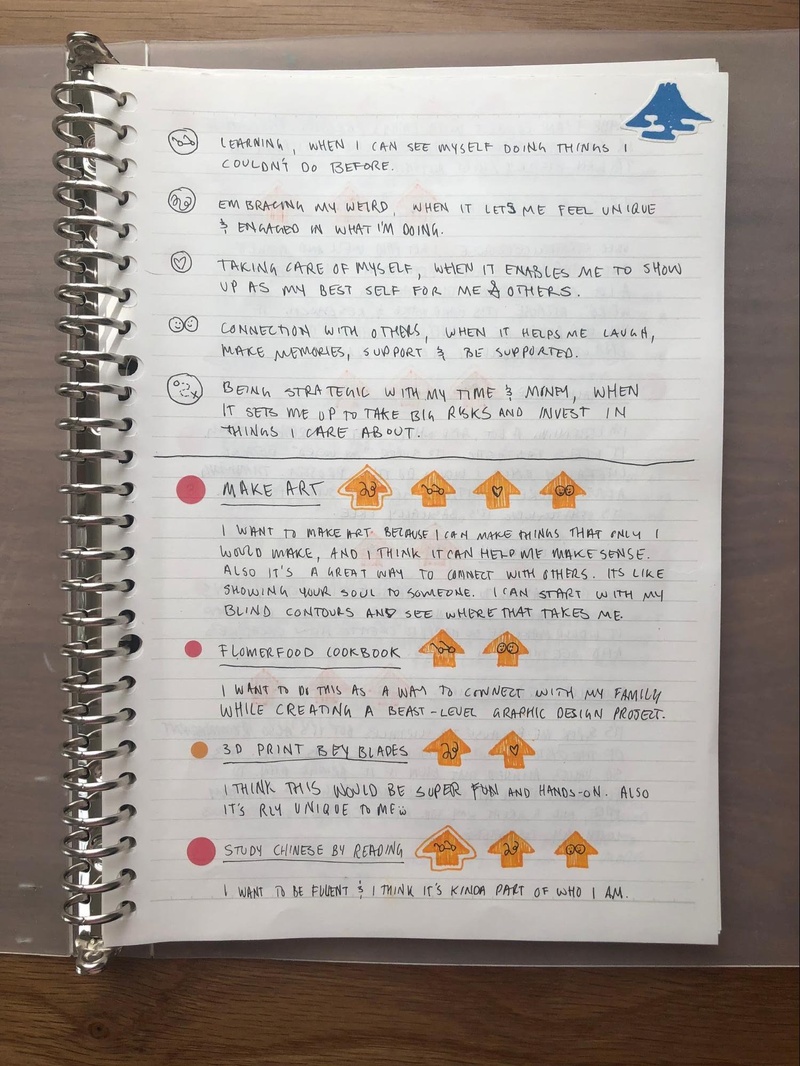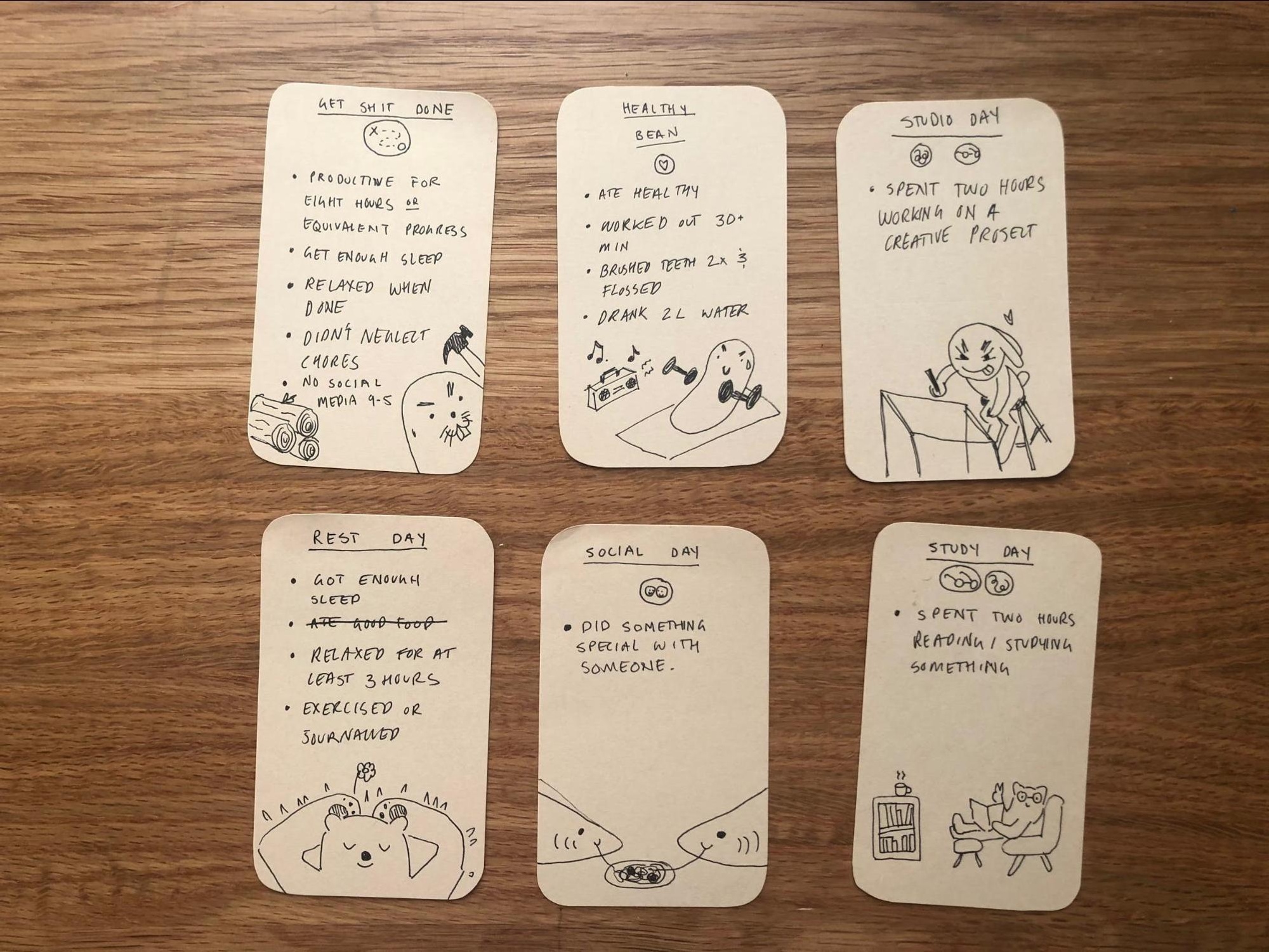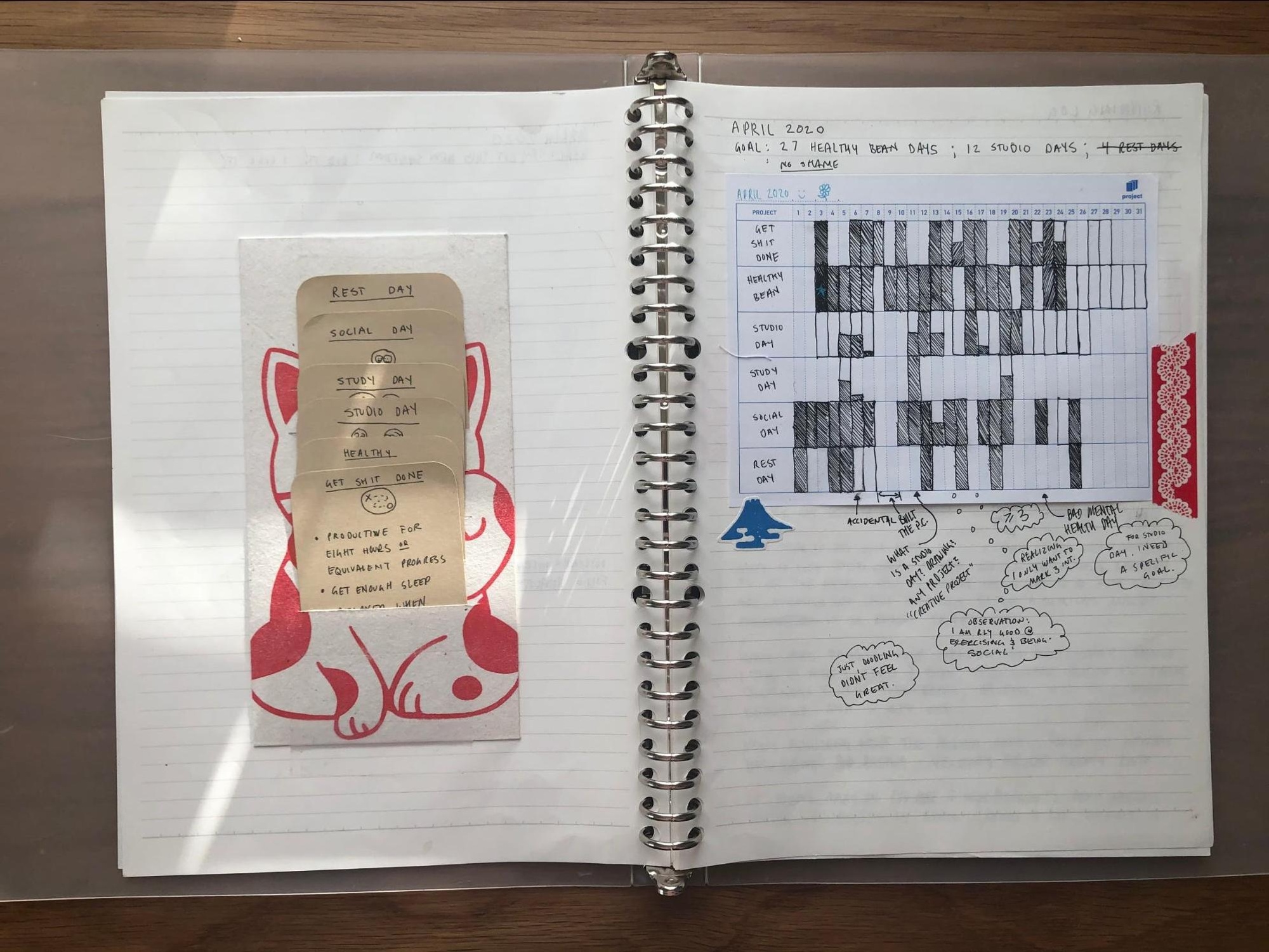How to prioritize your project ideas
I’m a game and interaction designer who loves creative side projects, perhaps too much. It seems like every day I get distracted by a new shiny idea that feels like the best idea I’ve ever had. As such, I tend to accumulate long lists of projects I want to do, and then struggle prioritizing them. Even when I did manage to prioritize a project, I didn’t always feel great about how I made that decision, and tended to lose steam when I second-guessed my decision about what to focus on.
As a game designer, I know that hard things in life can also be fun. I wished that every day could start with the same excitement and motivation as choosing what quest to complete in Legend of Zelda; I wanted prioritizing side projects to feel as special and exciting as picking magic abilities in Dungeons in Dragons. Over the past few years, I’ve iterated on a system that makes it fun and rewarding to prioritize my project ideas, and it’s revolutionized my ability to make progress with my projects.
With a lot of us cooped up inside, there are a lot of people online and in the media telling you what to spend your time on, but I think it’s a lot more helpful to offer ideas for how to decide for yourself. We all have different values, so only you can decide the best way to spend your time. Personal values can be amorphous and hard to pin down, so it can be hard to see how they connect to your day-to-day life. That’s where this article comes in. I’ll walk you through how I developed my process, why it works for me, and how you can use it, too.
— Ryan Mather
Step 1: Write down all of your project ideas
The first time I wrote down all of my project ideas in one place, it was the spring of 2016. I was visiting a friend, and I felt the kind of optimism you might feel at the first glimpse of flowers poking up from the soil at the end of winter. While I waited for my friend to get off work, I had the idea to write down all my project ideas, and then rank them based on how much I wanted to do them. This approach ended up leading me to the decision to finally focus on FlipTales, a roleplaying game I released on Kickstarter after tinkering on it as a side project for years.
Writing an exhaustive list of all my ideas is one part of my decision-making process that has remained unchanged since that day in 2016. To reignite the optimism of that original experience, I tend to get a big cup of coffee and sit down for an hour or more to try to make sure I leave no project idea unturned. This way, when I hit the boring part of my projects (in the case of FlipTales, importing goods from overseas and learning that someone else had been using my social security number), I can rest assured that I considered everything else I might be working on instead, and made a sound decision to push this one idea to fruition. Long story short, making this list is like investing in motivation insurance.
Exercise:
Get comfortable and inspired. Maybe this means making a cup of coffee, or creating a spot for yourself surrounded by your notebooks and other inspiration. Write down every project idea you can possibly think of.
We’ll come back to these later, so hold off on ranking them for now.
If you’re keen, here’s a worksheet that you can use to work through the list-making process. Otherwise you can do whatever works for you.
Step 2: Document your personal values
Simply ranking my ideas by how much I wanted to do them was good enough of an approach to get FlipTales out the door, but I found that over time I didn’t feel great about all the choices I made, or I would drop the ball on them once the initial novelty wore off. Some projects from the graveyard include: making a pet robot, designing a font, and redesigning my family’s cookbook.
Around fall of 2017 I read a blog post about Human Systems, a community of people who were thinking critically about how software is designed. I signed up for their class, and it opened my eyes to how much personal values drive our happiness and fulfillment. I realized that understanding my own personal values on a deeper level could help me make decisions that I would harmonize with over the long haul.
Here are some prompts to help you zero in on your own values:
-
Who are some of your role models? Write them down. Oftentimes, our role models represent values that we care about.
-
What are some times of your life that felt like time well spent? Ask yourself why these felt meaningful. You might find that you were living by certain values. For example, when I was in art school I “embraced my weird” by pursuing projects that didn’t have a clear connection to my major.
-
What are some major conflicts you’ve had in your life? Whether it’s doing something your parents didn’t approve of, ending a relationship, conflict can represent two values that are at odds with each other. For example, When I left my last job, I left abruptly, which damaged my relationships with my coworkers, which I felt incredibly guilty and remorseful about. I made the decision to leave abruptly to pursue what I felt was a once-in-a-lifetime learning opportunity. This conflict was instructive to me in showing me how much I care about learning, but also how much I care about preserving my relationships, too.
-
The opposite of these questions work, too. Who are your anti-role models? What are examples of time not well spent?
Exercise: Write a list of values
Using your responses to the above prompts, see if you can zero in on any similarities that keep popping up. Once some key ideas have emerged, try to articulate those similarities into value statements.
Here’s an example of my value statements, as they exist today:
-
Strategic with my time & money, when it lets me invest in the things I care about
-
Embracing my weird, when it lets me feel unique and engaged in what I’m doing
-
Learning, when I can see myself doing things I couldn’t do before
-
Connection with others, when it helps me laugh, make memories, support others, and be supported
-
Taking care of myself, when it enables me to show up as my best self
After completing the above, I give each value a catchy title, such as “Connecting with others” and an icon. I’m a helplessly visual thinker, so I simply cannot wrap my mind around these things unless I can draw a picture with them.
If you want to go really deep down this rabbit hole, there’s a section on the worksheet that can help you refine these. I’ve found that the more I understand my personal values, the better I am at committing to things and feeling good about my decisions, so I encourage you to check it out if you’re interested.

Step 3: Map your values across your project ideas
Even though I had been thinking about personal values and side projects for a long time, it wasn’t until summer of 2019 when I put the two together. I was taking a coffee break at the Sightglass on 7th st. in San Francisco’s SoMA district. Its open space and generous natural light had me feeling inspired, and I decided to try mapping my personal values onto my project ideas. I had just received an offer for a job in the South Bay with a bigger focus on hardware. I was also finishing up fulfilling the FlipTales Kickstarter. I needed to decide if I should accept the new job offer, and if I should continue working on FlipTales or go in another direction with my creative practice, like sculpture or painting.
I decided to go through each of my project ideas and annotate which of my values resonated with them. I like to draw colorful arrows with the value icon on them when something is harmonizing.
Then, I write a sentence or two about how I feel about the mapping. Do I still really want to do this thing even though it only harmonizes with one value? Am I not that interested in this even though it seems to check all the boxes? This helps me evolve my understanding of my values and helps me feel confident about my decisions.
The magic about this step is the reasoning behind your choices. Instead of picking ideas based on simply what you feel on the day you write the ideas down, you’re making choices that are fundamentally rooted in who you are as a person. That way when you’re in the weeds with your projects and you ask yourself, “why am I doing this?” You can answer, “It’s who I am.”
Then, the least fun part, pick the one (or two (okay, three if you are feeling ambitious)) projects you want to commit to getting done. I tend to think in terms of seasons (ie. Spring, Fall) but this seems to be an extremely personal preference.
Exercise: Map your values onto your project ideas Document which of your values align with each of your projects ideas. I use the icons for this. Write a short description of why each value applies, and how you feel about it. Select your top 2-3 to focus on for the near future.
Step 4: Set up a menu of days
Once I started mapping my values onto my project ideas, I felt a lot better about the decisions I was making in terms of what to focus on. Using this process, I decided that I wanted to spend more time making blind contour drawings.
However, with my new job having me commute over an hour each way, I felt like I was still dropping the ball on my projects. I had figured out how to make choosing the projects feel fun and personally meaningful, but I didn’t yet have a fun way of living by those decisions, and committing to them. There was a gap between my intention to take on exciting projects, and the reality that I don’t have time every day to do something, and I don’t want to force myself into working on my projects even when I feel exhausted.
During a phone call with my dad, he told me that he has a practice of journaling about the kind of person he wants to be every day. I realized that there was some common ground between that practice, and the ritual of picking an ability card in FlipTales. When you pick an ability card in FlipTales, it gives you special abilities and helps transport you into the game world. I thought that maybe I could create a menu of days based on my project ideas and my values, and I could “play” those cards each day to set an intention for the day. It could give me the same taste of having super powers and transporting me to a different world for just that day.
I can set goals like “Get in 10 studio days this month” and feel confident that I’ll reach my larger goals (finishing a project) without being overly outcomes-driven (which I find to be creatively suffocating). While a To-Do list tells you what to do, the menu of days gives you options for how to live by your values based on what you actually feel like doing on a certain day.
So, I created a set of 6 cards, each representing a kind of day.
This is primarily where my project ideas get done

Each card has a catchy title, a cute illustration, the icons of the values it resonates with, and a description of what that day looks like.
For example, Studio Day resonates with “Embracing my weird” and “Learning,” and I give myself credit for a Studio Day as long as I spend 2 hours on a creative project. I don’t directly put deliverables associated with my projects on these because I find they change rapidly, but if that works for you go ahead.
Each month, I set some goals based on these cards (e.g. “Get in 10 studio days this month”), and I keep track of those in a cute project-tracking journal I found at Itoya. (There’s a template you can use for this process in the worksheet.) Over the course of the month, I jot down notes like, “Wow, I suck at completing studio days for some reason, why?” which will help me build self-awareness to get better and better each month.
Exercise: Set up a menu of days
Translate your values into a menu of days which realistically portray how your values might show up in your daily life. Optional: Set up a chart to reflect on how often these days end up and how that makes you feel.

Now, I don’t just look forward to picking projects, but also the process of waking up every day and picking what cards to “play.” My dream of feeling like I’m choosing a quest in Zelda is finally coming together. I won’t lie—I still have my existential meltdowns and “what does it all mean?” moments. But now I have tools to channel those thoughts, and I can channel them into improving my awareness and getting better at this life thing and having more fun with it.
I’m sure in a year or two my process will look different, so I encourage you to remix this into whatever works for you. Please reach out to me if you end up trying something inspired by this, I’d love to hear from you and learn from your experiences.

